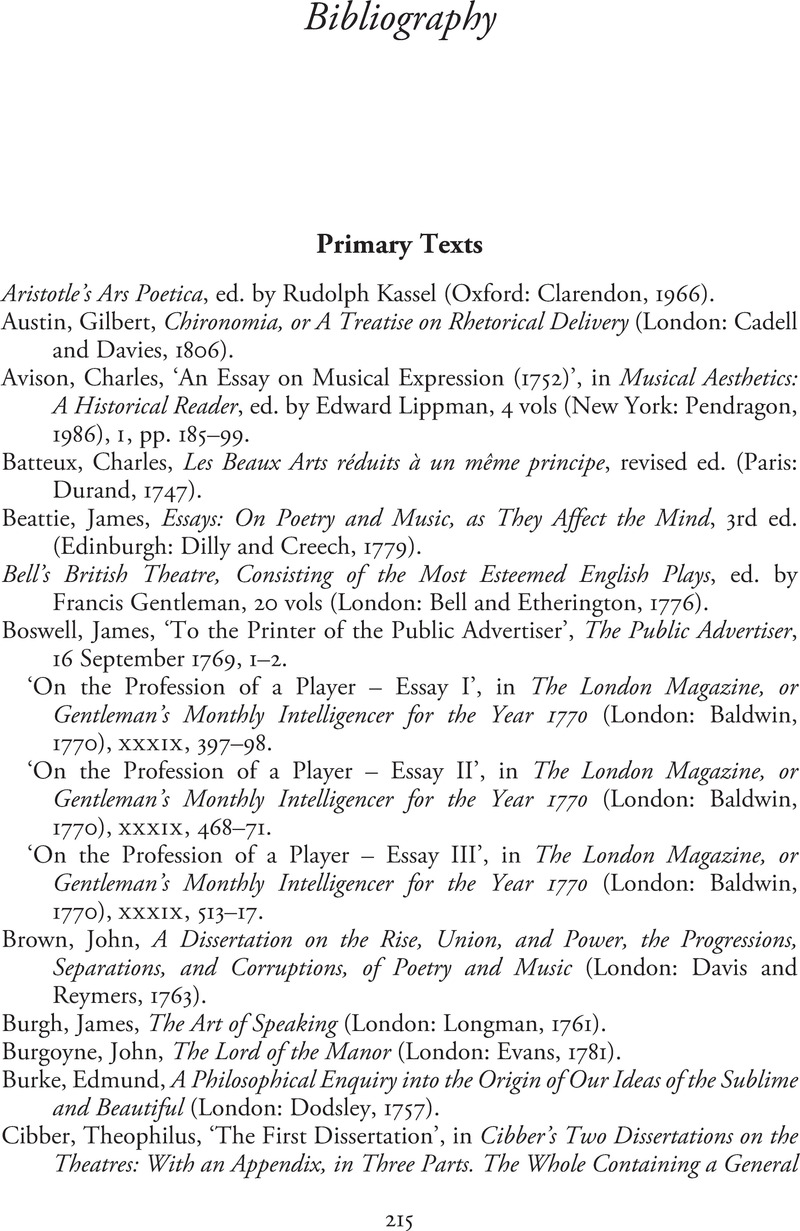Book contents
- Criticism, Performance, and the Passions in the Eighteenth Century
- Criticism, Performance, and the Passions in the Eighteenth Century
- Copyright page
- Dedication
- Contents
- Illustrations
- Acknowledgements
- Note on Style
- Introduction
- Chapter 1 Dramatic Transition
- Chapter 2 Zara
- Chapter 3 Odes
- Chapter 4 King Lear
- Chapter 5 Dramatic Character
- Coda
- Notes
- Bibliography
- Index
- References
Bibliography
Published online by Cambridge University Press: 02 March 2021
- Criticism, Performance, and the Passions in the Eighteenth Century
- Criticism, Performance, and the Passions in the Eighteenth Century
- Copyright page
- Dedication
- Contents
- Illustrations
- Acknowledgements
- Note on Style
- Introduction
- Chapter 1 Dramatic Transition
- Chapter 2 Zara
- Chapter 3 Odes
- Chapter 4 King Lear
- Chapter 5 Dramatic Character
- Coda
- Notes
- Bibliography
- Index
- References
Summary

- Type
- Chapter
- Information
- Criticism, Performance, and the Passions in the Eighteenth CenturyThe Art of Transition, pp. 215 - 227Publisher: Cambridge University PressPrint publication year: 2021



